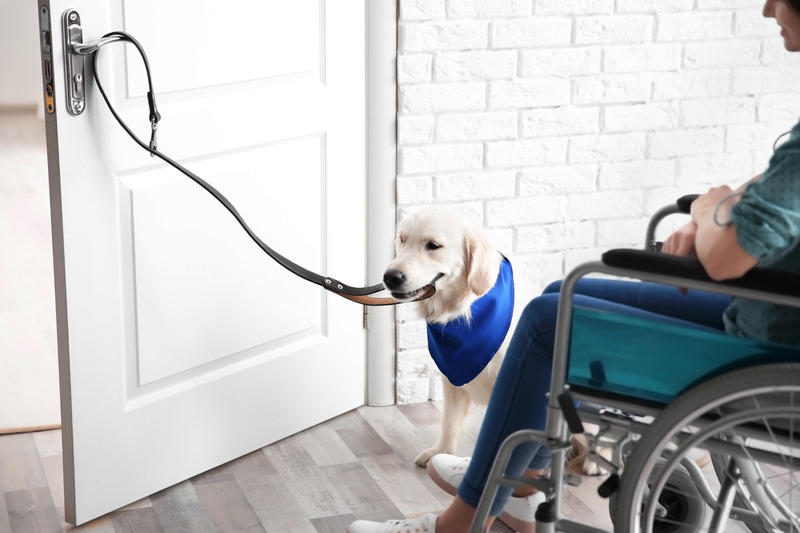Service dogs serve many purposes. They commonly help people with vision and hearing impairments and serious medical conditions. They can also assist people with mobility issues.
Mobility service dogs help their handlers in various ways. Read on to learn how they improve their owner’s quality of life.
Understanding Mobility Impairments
Mobility impairment has a profound effect on people’s lives. Many people take movement for granted but once we become limited by an injury, we understand how it can impact everyday life. It can also cause depression and anxiety which take a toll on one’s mental health.
Several types of permanent and temporary impairments may require a mobility assistance dog. Here are some examples:
- Arthritis, joint, spinal and muscle disorders
- Cardiac disorders that can lead to balance issues
- Brain injuries
- Neurological disorders
- Multiple sclerosis
- Chronic migraines
- Fibromyalgia
- Cerebral palsy
- Spinal Bifida
- Vertigo
- Side effects of medication
- Coordination issues
How Service Dogs Assist With Mobility Challenges
An assistance pet can handle many service dog tasks for their owner. Here are a few examples:
- Pull a wheelchair
- Provide support for balance
- Assist a handler in getting into their wheelchair
- Retrieving items including mobility assistance devices
- Protect owners if they fall in public
- Help handlers get up from a fall
- Bring handlers medication
- Open and close doors and draws
- Turn lights on and off
- Press buttons including doorbells, elevator buttons, and keypads on a phone to dial emergency services
- Notify others if their handler falls or experiences an emergency
- Helps their handler get to a safe place after a fall or a bout of dizziness
- Cover their handler with a blanket to regulate their temperature
Training Service Dogs for Mobility Assistance
Mobility dog training is highly specialized because dogs must learn basics such as socializing and avoiding aggressive behavior. They will also receive specific training depending on their owner’s needs.
Service dogs typically begin training when they are around six months old. However, they can’t fully perform as a mobility service dog until they are two.
They retire when they are about eight. At this age, they may be unable to provide many of the service dog tasks they performed when they were younger.
Many handlers keep their dogs after they retire. However, some agencies require handlers to return dogs after retirement.
Owners must also consider the best mobility service dog breeds. Dogs that respond well to training include:
- German Shepherds
- Dobermans
- Newfoundlands
- Standard Poodles
- Rottweilers
- Bernese Mountain Dogs
Assistance Dogs International plays a key role in mobility dog training. They set a standard for training, assistance acquisition, and partnership. They also help with finding a service dog and you can also use their website to find service dogs for the disabled in your area.
Do Mobility Dogs Need to Wear Special Equipment?
There are no required mobility devices for dogs and they do not have to wear ID tags, vests, or harnesses. However, many handlers use a harness for their dogs because it helps maintain balance.
Living With a Mobility Service Dog
Most handlers enjoy a higher quality of life after adopting a service dog because the dog helps them lead a more independent, fulfilling lifestyle. They also provide companionship which reduces the anxiety and depression often linked to mobility impairments.
The care a mobility service dog provides is a two-way street. Owners must also care for their pets to ensure they are happy and healthy and provide optimal service. This includes taking them to the vet, feeding them quality food, and ensuring they exercise to get the mental and physical stimulation they require.
Conclusion
Mobility service dogs assist individuals with mobility issues. They help them perform basic tasks and assist in emergencies allowing their handlers to enjoy more independent lifestyles.
Justice Speaks provides more information for those considering service dogs for mobility impairments. We advocate to ensure handlers and dogs are treated with respect as well as overseeing workplace compliance and teaching school-aged children how to act in front of service dogs and handlers.
Contact us to learn more about what we’re doing to change the status quo.


